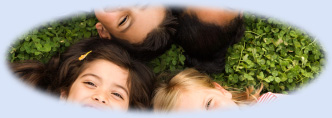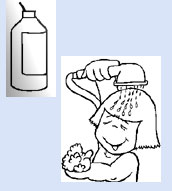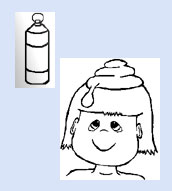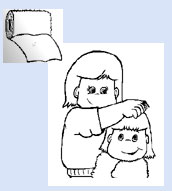 Home - Setting
parent partnerships
Home - Setting
parent partnerships
Supporting children in all their play and learning
environments
|
Head lice -
louse nits and eggs
no panic, no fuss,
start simple and act ..

what a fully grown single louse looks
like
Exploring the
3 step wet combing method
this
is a concept that helps to identify if there are live lice present
on children, young people and adult's heads,
it then disrupts the lifecycle by removing egg laying
adults.
Checking once a week enables you to be sure
if there are any live lice around.
1. Shampoo, wash & rinse
|
2.Condition, wait and rinse
|
3 Comb, wipe, remove, repeat
|



|
How the combing method works
Many conditioners contain
a substance called dimeticone which is a silicon and when applied
to hair and rinsed it leaves a 'locked in' moisture barrier to
each individual hair making it difficult for lice to grip onto.
In addition to this dimeticone also coats the lice during the same
process which causes a temporary disruption to their breathing which
enables the lice to be combed out with greater ease.
Taking lice from the scalp in this way reduces the
potential for egg laying.
When all adults are removed no egg laying occurs
and the cycle is sucessfully broken.
 Head lice on NHS.uk
Head lice on NHS.uk
|
|
|
What
to use
Lice
facts:
Lice crawl from hair to hair
They don't have leg joints so are unable
to jump
They don't have wings so cannot fly
They dehydrate after six hours of not feeding
on blood
The life cycle of a louse is approximately
30 days
Eggs are laid close to the scalp, needing
the warmth to live
Black eggs are nits that have live lice
inside
White eggs are empty nit cases - the louse
nymph has hatched ...
Public Health England Guidance
on infection control Gov.uk
Enlist the help of your local GP surgery, school nurse or other
suitably qualified person so that all children and adults are safeguarded
with the most up-to-date information and treatments and techniques.
|
Additional resources
 Bug busting week information
Bug busting week information
 FAQ from Australia this page offers excellnet
guidance: scratching for answers
FAQ from Australia this page offers excellnet
guidance: scratching for answers
 Silkysteps forum thread and activity ideas
- head lice topic
Silkysteps forum thread and activity ideas
- head lice topic
Books
 Scritch scratch we have nits
Scritch scratch we have nits
 Bugs in my hair
Bugs in my hair
 Yikes lice
Yikes lice
 For older children - whats bugging bailey blocker
For older children - whats bugging bailey blocker
 For reseach - nits and head lice
For reseach - nits and head lice |
|

|
|

